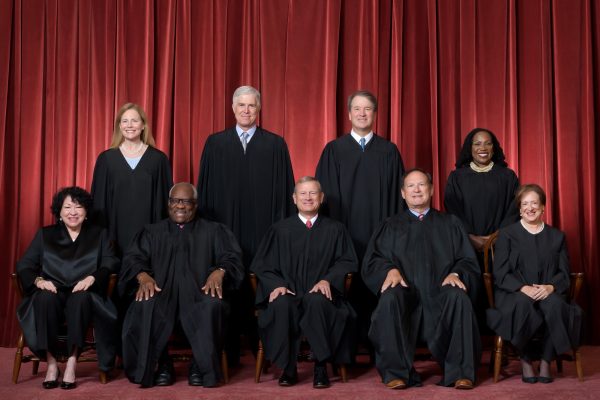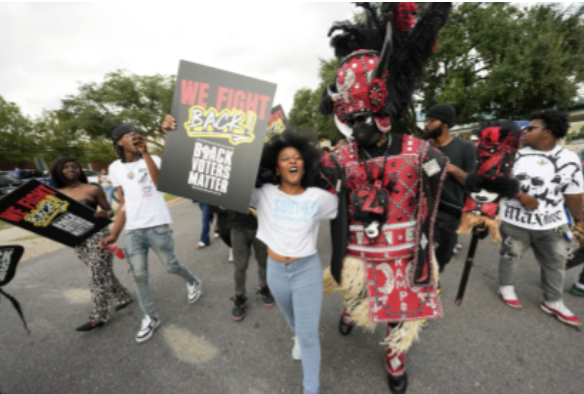This Wednesday, October 15th, the U.S. The Supreme Court is set to hear from challengers to the Voting Rights Act. The court will decide whether Section 2 of the Voting Rights Act (VRA) will be upheld. Created in the 1960s, the law helps protect minority voters from being drowned out in elections by barring electoral maps from diluting the minority vote, even without direct proof of racist intent.
After the 2020 census, Louisiana drew voting maps that allotted Black voters 1 out of 6 congressional districts. A judge deemed this unfair because around a third of the state’s population is black. The state then created a new map with 2 Black-majority districts, creating a fair distribution of voting districts.

Image Courtesy of The Supreme Court Historical Society
This decision, however, sparked Republican-led opposition. Now suing, the group claims that raising the number of black-majority districts from one to two violates the constitutional promise of equal protection and hurts white voters. The map, including two black-majority districts, would typically hurt Republican elections, because Black voters tend to support Democratic candidates. That said, having two congressional districts makes sense because it correlates with the proportion of black people in the state.
According to Harvard Law School Professor Nicholas Stephanopoulos, if the court strikes down Section 2 of the VRA, the consequences could include the elimination of minority-opportunity districts in states with unified Republican governments. Minority-opportunity districts are electoral districts where racial minorities have the majority, and therefore have a chance to elect a candidate of their choice. With the usage of the electoral college, it is important that minority voters have these districts, or their votes could be drowned out.
Another consequence, according to reports by Fair Fight Action and Black Voters Matter Fund, is the reduction of minority representation in Congress. Furthermore, Republicans may gain as many as 19 additional seats in the U.S. House.

Image courtesy of The Washington Post
The Supreme Court is expected to decide by the end of June. With the 6-3 conservative majority, it can be expected that they will either limit or possibly eliminate the use of race when drawing voting districts, even if that weakens protections for minority voters. This can also be expected because of previous skepticism towards race-conscious laws and policies, including affirmative action in college admissions, which they struck down in 2023.
Clearly, this decision carries weight, not just for voters in Louisiana but for the representation of minority voters everywhere. Essentially, the Supreme Court will decide whether the government should use race to make voting fairer for groups that have faced discrimination, or whether laws and maps should be completely colorblind even if that leaves minorities underrepresented.


